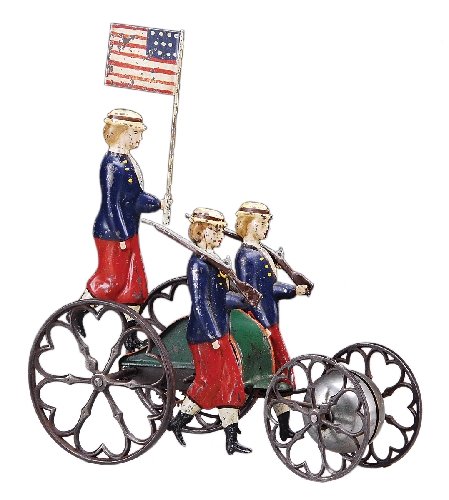Flags made toys more appealing

We recently celebrated a holiday that goes back to 1868, after the Civil War. Flags were put on soldiers’ graves in the North, and Gen. John A. Logan of the Union Army declared May 30 to be “Decoration Day” for the nation. Twenty-seven states celebrated it that year. Next, it became a tradition to have a Decoration Day speech and events in cemeteries. In 1866, the South celebrated its own holiday remembering Confederate soldiers, and by 1916 it was held each year on June 3, the birthday of Confederate President Jefferson Davis. Gradually the holidays merged and came to be called “Memorial Day.”
Celebrations eventually honored soldiers who died in World War I and all the wars that have followed. The holiday was moved to a Monday in 1968 so a long weekend was available for family events, visits to graves of family members and soldiers, and parades, speeches and flag waving. There are other days that call for flags, including the Fourth of July, Presidents Day, Flag Day and Pearl Harbor Day.
Toymakers, even in Victorian times, realized that a flag on a toy made it attractive to a child, so many flags were included in playthings. Althof Bergmann, a German toymaker, created a bell toy in 1875 that would charm anyone. Three people are riding a wheeled parade vehicle, and one of them is holding an American flag. When the toy was wound, it ran in circles or a straight line, the bell rang and the flag waved. It is a rare antique patriotic toy that expresses the spirit of flag-waving events.
Q: My family’s antique sofa has a gold label on the back that says “UIU.” What does that stand for?
A: UIU stands for the Upholsterers International Union, which was founded in 1892. So your sofa wasn’t made before that date. The UIU merged with the United Steelworkers in 1985.
Terry Kovel’s column is syndicated by King Features. Write to: Kovels, (Las Vegas Review-Journal), King Features Syndicate, 300 W. 57th St., New York, NY 10019.












